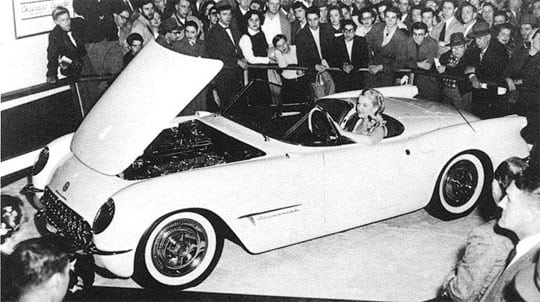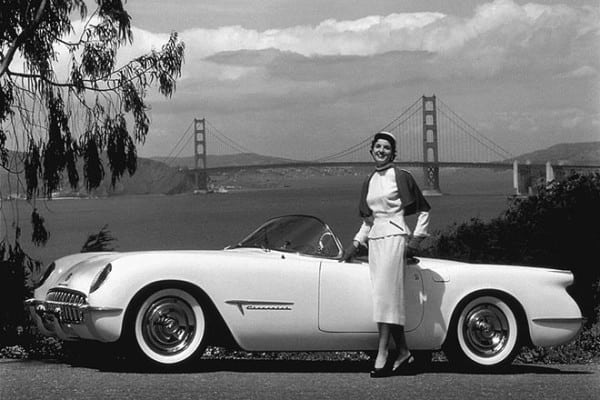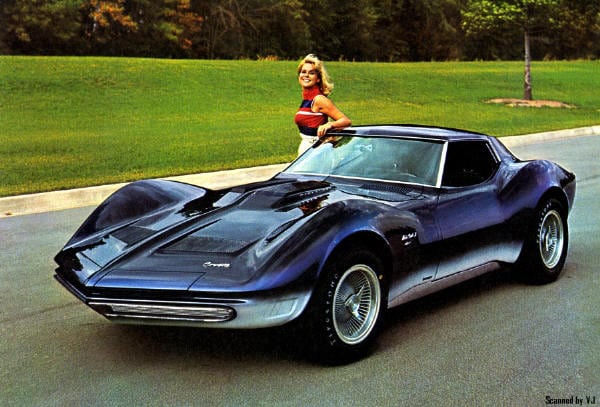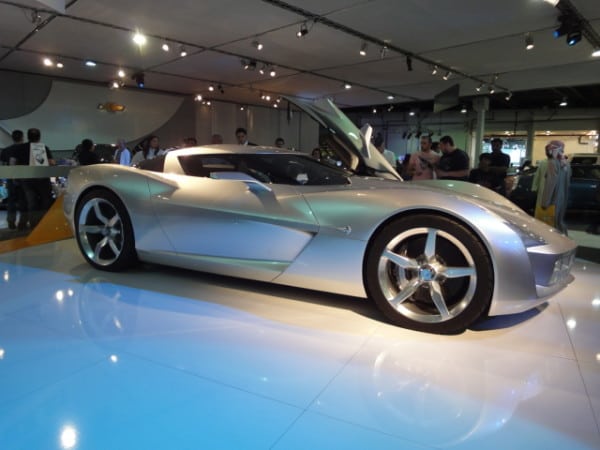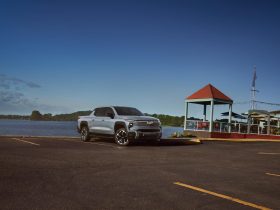The iconic Chevrolet Corvette series of sports cars celebrates its sixtieth anniversary this year. On January 17, 1953, the EX-122 Concept appeared at the GM Motorama and later that year, hand-built versions of the first Corvettes began to roll off a makeshift assembly line in Flint, Michigan.
Many believe that this was the birth of the American Muscle Car Age. Whatever it was, it was the beginning of a legend and the creation of an automotive mythos that would continue for decades. Since that first concept, several concepts meant to showcase the future of the Corvette have come and gone.
Harley Earl’s EX-122 That Started It All
In 1951, Harley Earl was pining for a mid-priced sports car to compete with the foreign imports being brought to the U.S. by well-heeled GIs who longed for the experience they’d had in Europe and couldn’t find in the U.S. Earl’s concept was called the EX-122, which was its engineering number (Experimental #122) and began development in 1952.
The EX-122 was meant to be a production-ready prototype and was designed as such, with a lot of detail going into the vehicle’s mechanics. As such, it was not forward-looking in terms of technology, but was the harbinger of things to come for Chevrolet’s future sports car designs.
When the EX-122 appeared in January of 1953 at the Woldorf Astoria in New York City, it was an immediate success. It’d been renamed after a fast-attack warship class in the U.S. Navy, the Corvette class, and was forever to be known as the Chevrolet Corvette. GM immediately began marketing the car for sale, giving it the lofty price tag of $3,500 with delivery to begin late that year.
The production Corvette of 1953, of which about 300 were made, were all hand-built in a former truck plant in Flint, Michigan and were virtually identical to the EX-122 with the first two rolling off the line in June.
The EX-122 was eventually purchased and refurbished by GM experimental engineer R.F. Sanders, who painted it red and added a hard top for practicality. In 1959, he sold it for $1,000 to John Ingle who owned it until 2002. He sold it to Kerbeck Corvette, it’s current owner, who restored it to its original condition and paint color for display with the exception of the V-8 engine remaining (the original had an I-6).
Bill Mitchell Takes the Reigns and the Stingray Is Born
After Harley Earl’s retirement, Bill Mitchell took over the design department at GM. Where Earl was obsessed with aircraft, Mitchell was obsessed with aquatic life. Naturally, the Corvette, a tribute to a Navy warship class, was tagged to become a newly-minted sea animal under Mitchell’s eye.
1959 Sting Ray Racer
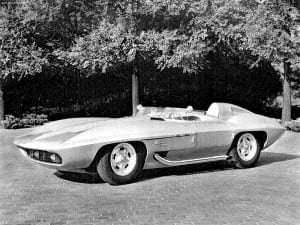 The second-generation of the Corvette, the C2, was based on the 1959 Sting Ray Racer, which made its public debut at the Marlborough Raceway in Maryland. With an experimental, high-compression V8 engine under the hood displacing 4.64 liters, it took fourth place in its debut race. It continued racing through to 1961 when it was retired from the circuit and began the auto-show rounds.
The second-generation of the Corvette, the C2, was based on the 1959 Sting Ray Racer, which made its public debut at the Marlborough Raceway in Maryland. With an experimental, high-compression V8 engine under the hood displacing 4.64 liters, it took fourth place in its debut race. It continued racing through to 1961 when it was retired from the circuit and began the auto-show rounds.
Of course, before that production C2 was made, a formal concept had to be built and showcased.
1961 XP-755 Mako Shark
From Stingrays to sharks, the Corvette was decidedly aquatic now. Mitchell wanted two things out of his design studio: a streamlined, powerful machine based on an 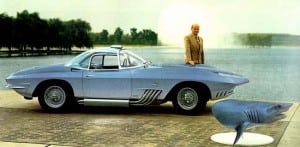 aquatic animal of the same bent and a paint scheme that would decidedly match that theme. For whatever reason, lead designer Larry Shinoda focused on the Mako shark, probably because of its phenomenal speed and aggression, and mounted one in the studio as inspiration for the team.
aquatic animal of the same bent and a paint scheme that would decidedly match that theme. For whatever reason, lead designer Larry Shinoda focused on the Mako shark, probably because of its phenomenal speed and aggression, and mounted one in the studio as inspiration for the team.
The legend goes that once the design was complete, he and Mitchell demanded that they paint it to exactly match the fading two-tone of the shark. After several tries and failures, the studio workers got together and decided to take their best effort at matching and paint the shark to match instead, fooling the bosses into believing they’d done it.
Whether the story is true or not, the Mako Shark and its stuffed model from the sea were showcased together in promotional stills when the concept hit the circuit in 1961. It became, very obviously, the model for the first production Sting Ray.
1965 Mako Shark II
A few years after the first Mako Shark, Mithcell had the original concept body removed and a new one designed as the Mako Shark II. Two were built, one a working prototype and the other a rolling chassis show model. This car became the 1968 Corvette.
1969 XP-882 Aerovette
If the name didn’t sink this concept, the transverse, mid-mounted engine configuration probably would have. Two of these concepts were made, one ordered by John DeLorean (a general manager at Chevrolet at the time) for the 1970 New 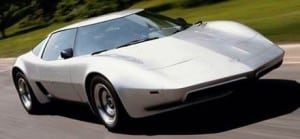 York Auto Show. DeLorean then basically took over the concept and had more work done, including an aluminum alloy body version which became known as the XP-895 Reynolds Aluminum Car in 1972.
York Auto Show. DeLorean then basically took over the concept and had more work done, including an aluminum alloy body version which became known as the XP-895 Reynolds Aluminum Car in 1972.
The XP-895 idea created a stir and Mitchell, threw in a paired set of Wankel rotary engines from a scrapped Chevrolet Vega prototype for a 1973 debut. Then, in 1977, the concept was once again resurrected, this time with a 6.6-liter V8, and renamed the Aerovette (pictured here).
The Aerovette was meant for production, beginning for the 1980 model year, but Mitchell’s retirement and lackluster sales in mid-mounted engine designs for sports cars changed plans and nixed the car. At least, it nixed it for everyone but DeLorean, who’d become fascinated by bare-metal bodies and mid-engine wedged sports cars.
2009 Corvette Stingray Anniversary concept
At the 2009 Detroit Auto Show, fifty years after the original Sting Ray racer, a mashup design of the 1963 Sting Ray and the 1968 Stingray was introduced as a one-off show car. It bedazzled show attendees and made appearances in two episodes of the Transformers movie franchise both that year and in 2011 in modified form.
The concept featured definite Mako Shark lineage along with modern design upgrades and forward-lifting doors.


